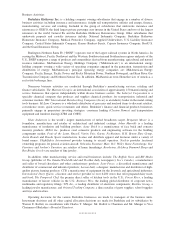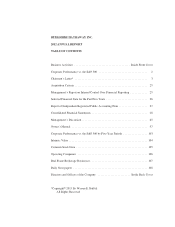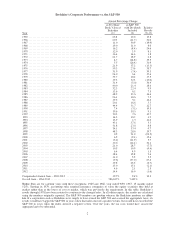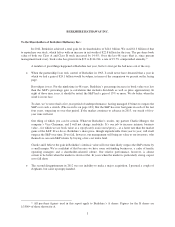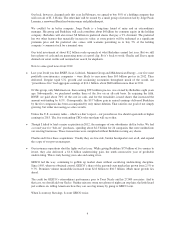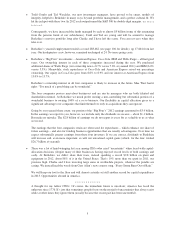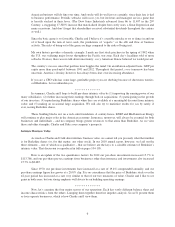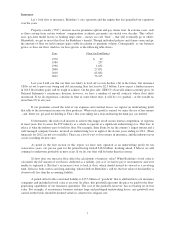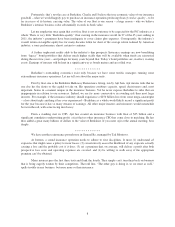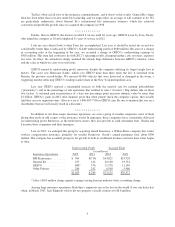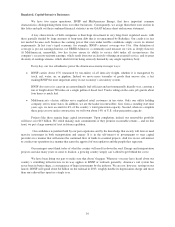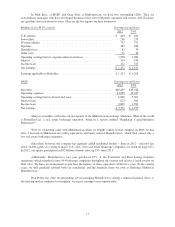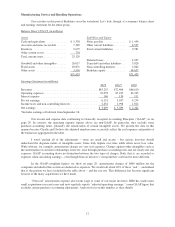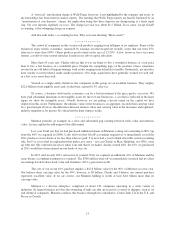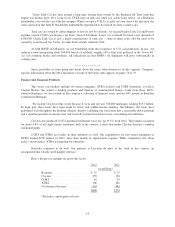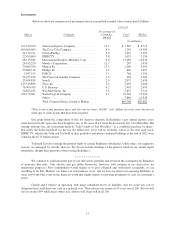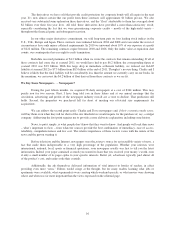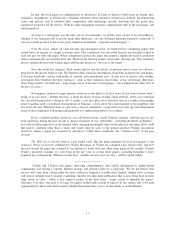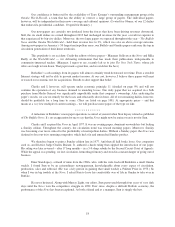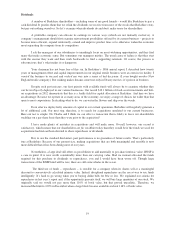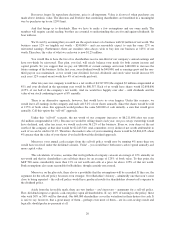Berkshire Hathaway 2012 Annual Report Download - page 12
Download and view the complete annual report
Please find page 12 of the 2012 Berkshire Hathaway annual report below. You can navigate through the pages in the report by either clicking on the pages listed below, or by using the keyword search tool below to find specific information within the annual report.Regulated, Capital-Intensive Businesses
We have two major operations, BNSF and MidAmerican Energy, that have important common
characteristics distinguishing them from our other businesses. Consequently, we assign them their own section in
this letter and split out their combined financial statistics in our GAAP balance sheet and income statement.
A key characteristic of both companies is their huge investment in very long-lived, regulated assets, with
these partially funded by large amounts of long-term debt that is not guaranteed by Berkshire. Our credit is in fact
not needed because each business has earning power that even under terrible conditions amply covers its interest
requirements. In last year’s tepid economy, for example, BNSF’s interest coverage was 9.6x. (Our definition of
coverage is pre-tax earnings/interest, not EBITDA/interest, a commonly-used measure we view as deeply flawed.)
At MidAmerican, meanwhile, two key factors ensure its ability to service debt under all circumstances: the
company’s recession-resistant earnings, which result from our exclusively offering an essential service, and its great
diversity of earnings streams, which shield it from being seriously harmed by any single regulatory body.
Every day, our two subsidiaries power the American economy in major ways:
ŠBNSF carries about 15% (measured by ton-miles) of all inter-city freight, whether it is transported by
truck, rail, water, air, or pipeline. Indeed, we move more ton-miles of goods than anyone else, a fact
making BNSF the most important artery in our economy’s circulatory system.
BNSF also moves its cargo in an extraordinarily fuel-efficient and environmentally friendly way, carrying a
ton of freight about 500 miles on a single gallon of diesel fuel. Trucks taking on the same job guzzle about
four times as much fuel.
ŠMidAmerican’s electric utilities serve regulated retail customers in ten states. Only one utility holding
company serves more states. In addition, we are the leader in renewables: first, from a standing start nine
years ago, we now account for 6% of the country’s wind generation capacity. Second, when we complete
three projects now under construction, we will own about 14% of U.S. solar-generation capacity.
Projects like these require huge capital investments. Upon completion, indeed, our renewables portfolio
will have cost $13 billion. We relish making such commitments if they promise reasonable returns – and on that
front, we put a large amount of trust in future regulation.
Our confidence is justified both by our past experience and by the knowledge that society will forever need
massive investment in both transportation and energy. It is in the self-interest of governments to treat capital
providers in a manner that will ensure the continued flow of funds to essential projects. And it is in our self-interest
to conduct our operations in a manner that earns the approval of our regulators and the people they represent.
Our managers must think today of what the country will need far down the road. Energy and transportation
projects can take many years to come to fruition; a growing country simply can’t afford to get behind the curve.
We have been doing our part to make sure that doesn’t happen. Whatever you may have heard about our
country’s crumbling infrastructure in no way applies to BNSF or railroads generally. America’s rail system has
never been in better shape, a consequence of huge investments by the industry. We are not, however, resting on our
laurels: BNSF will spend about $4 billion on the railroad in 2013, roughly double its depreciation charge and more
than any railroad has spent in a single year.
10


